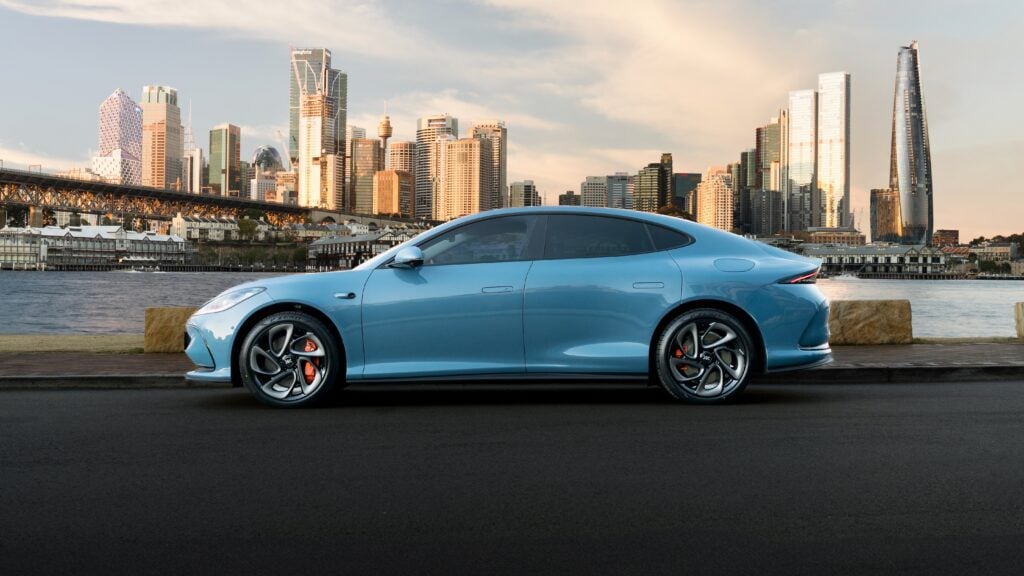
You probably spend quite a few hours of your life in a car, so it makes sense that your car’s interior deserves to be as well-kept and tidy as your home. When purchasing a new car, it’s important you take the time to consider whether the upholstery matches your lifestyle.
If you’ve got a dog or a fondness for sand, then it’s best to stay away from grit-trapping woven materials. Easily-scuffed leather seats are best avoided for those who own a lot of studded pants. Likewise for those considering a soft-top – think sun, exposed leather and burnt bottoms.
And let’s not forget those back-seat drivers. If little feet can reach the back of the front seats, then you should opt for dark-textured fabrics to hide the scuffs. Whereas lighter furnishing will give a sense of space for those that often travel with adults. And if you’re not one to travel lightly and often fold seats forward for cargo space, then you need a solid, rip-proof covering.
A medium-sized car contains around 20kg of textiles, all thoroughly tested for fire retardancy, durability and UV stability. Most base model vehicles use woven polyester fabrics and velours, which upgrade to man-made and “Nappa” leather trim as you climb up the pecking order. Let’s have a look at the fabrics available to spice up your car’s interior.
TYPES OF FABRIC
Velour is a plush knitted textile, usually polyester-based. It’s great for hot days, as the seats don’t get sticky and are less likely to leave imprints on your bare legs. The Peugeot 308 GT effectively uses velour inserts.
Who might love it: Rear passengers; this non-reflective and soft fabric stays cooler in summer.
Who might not: Parents with toddlers; sand will vacuum out, thickshakes won’t.
Woven textiles are the go-to for people that want two-tone seats, or contrasting panels, with a sporty look. Made from polyester and often 100 per cent recycled, the fabrics can be tweedy like the hipster grandpa seats on BMW’s i3, or smooth like the sporty seats on the Toyota Corolla RZ. While easier to clean than velour, these seats can get hot if the fabric is dark and the various lines and trims can leave imprints on bare legs. On the upside, woven fabrics are breathable if your seat has built-in cooling. Woven seats also provide some grip around corners.
Who might love it: Sustainability advocates, sporty drivers, parents needing a quick-clean option.
Who might not: Rear passengers; dark weaves can get hot and stuffy.
Leather traditionally signifies luxury and is usually available in a variety of colours and textures. Don’t forget that leather was once from a living thing, so it deteriorates. If conditioned, it will age better. “Nappa” leather, also known as aniline, is soft and open-pored. Because it is not covered by paint or coatings, aniline needs to be naturally perfect with no tick bites or markings, making it a premium-priced option. Uncoated it is susceptible to dirt, fat and bleaching from the sun, but pigmented Nappa leather is more durable. Leather seats don’t get hot and sticky in summer, but they can be slippery when cornering. Some manufacturers offer “naturally” tanned leather minus the chromium that makes conventional tanning a less sustainable choice. Volvo’s XC60 has premium leather seats that are chromium-free.
Who might love it: Leather aficionados who want cosseting; good leather is a beautiful thing.
Who might not: Vegans, anyone using the car to transport anything spiky or rough (furniture, skis) that might scuffed and dent the leather.
Fake leather can look like leather and feel like leather, but it’s not leather. If you’re looking for a super-resilient but luxe seat coating, then man-made leather has come a long, long way since vinyl.
Also known as pleather or vegan leather – Artico (Mercedes) or SensaTec (BMW) – it’s less breathable than the real stuff, but without the leather care headache.
Who might love it: Low maintenance leather lovers. Parents who want an upmarket interior with wipe-down convenience.
Who might not: Health-conscious people wary of the PVC and phthalates contained in some artificial leather products.
Ultraseude and Alcantara are synthetic fabrics that offer the soft goodness and breathability of suede, with none of the maintenance issues. Alcantara is the go-to for sporty cars because it’s flexible and stretchy enough to work with contoured sports seats. It also looks great with contrast stitching and it grips the driver so there is no slippage through fast corners. You will find it on steering wheels, seats, door linings and even the head linings – the Tesla Model S is lined with Alcantara. It’s more expensive than other textiles, but it’s easy to clean, creates clean lines and has grip.
Who might love it: Sporty drivers seeking a luxury finish.
Who might not: Sticklers for uniformity; the driver’s seat will grow a shiny patch as the pile wears.



